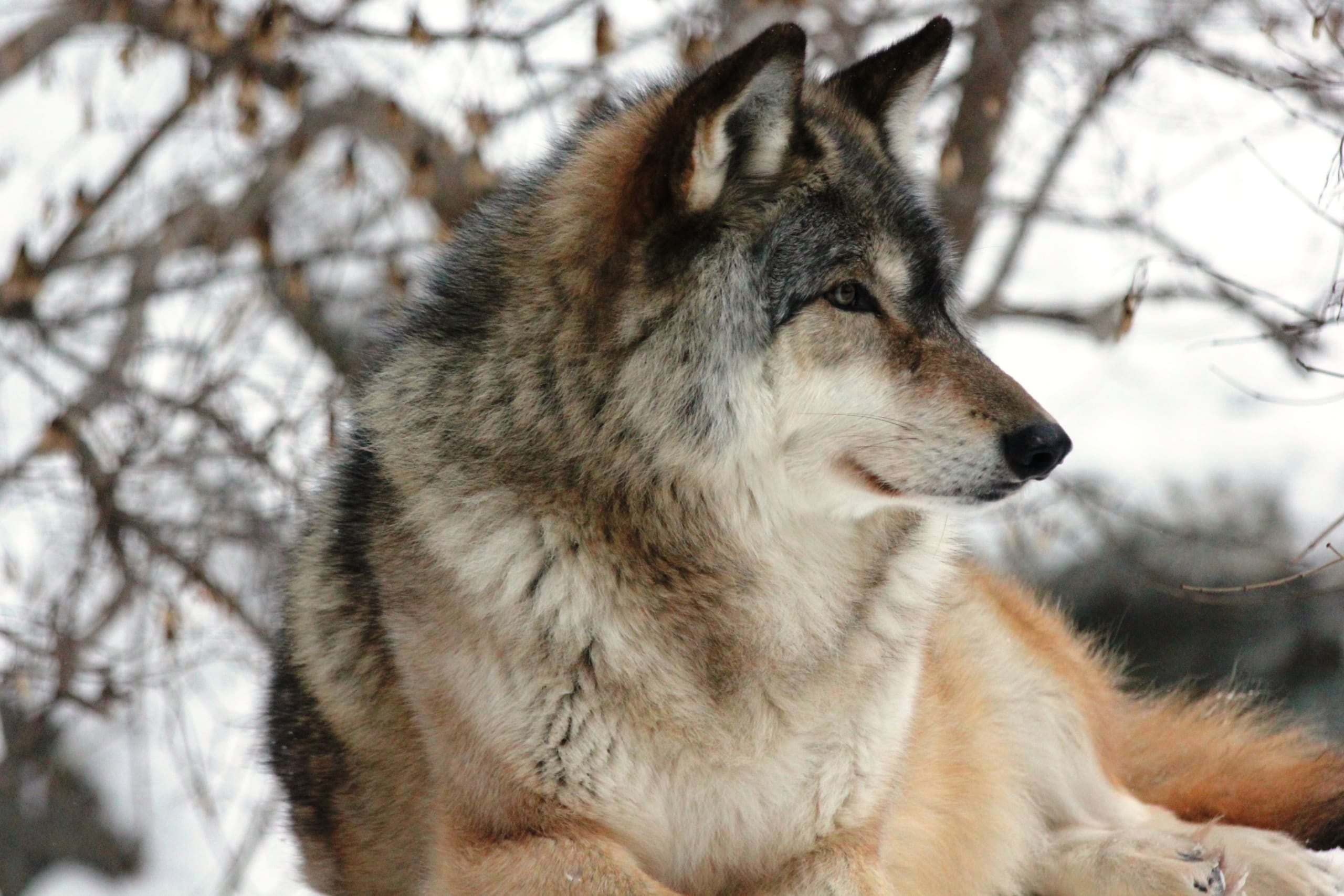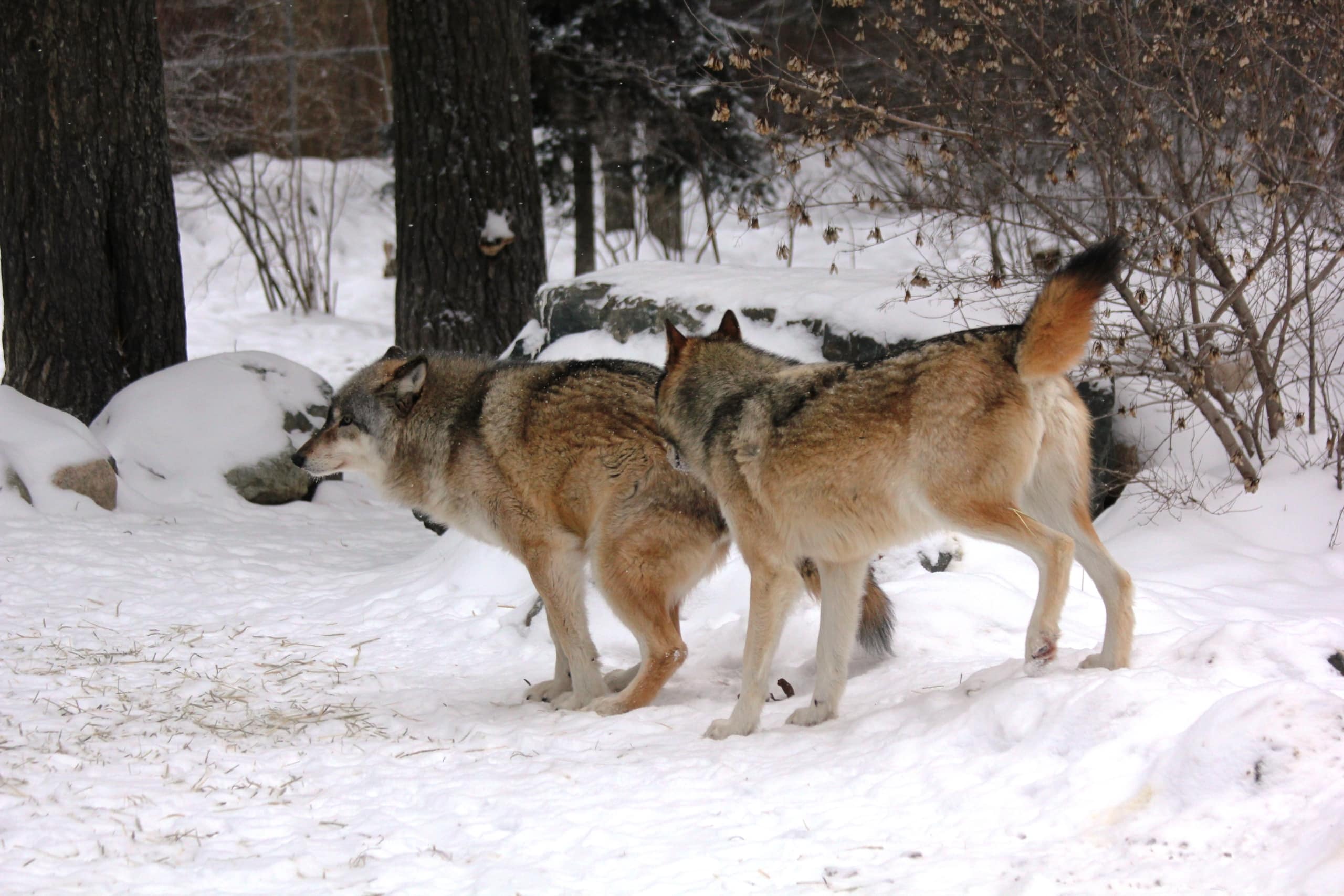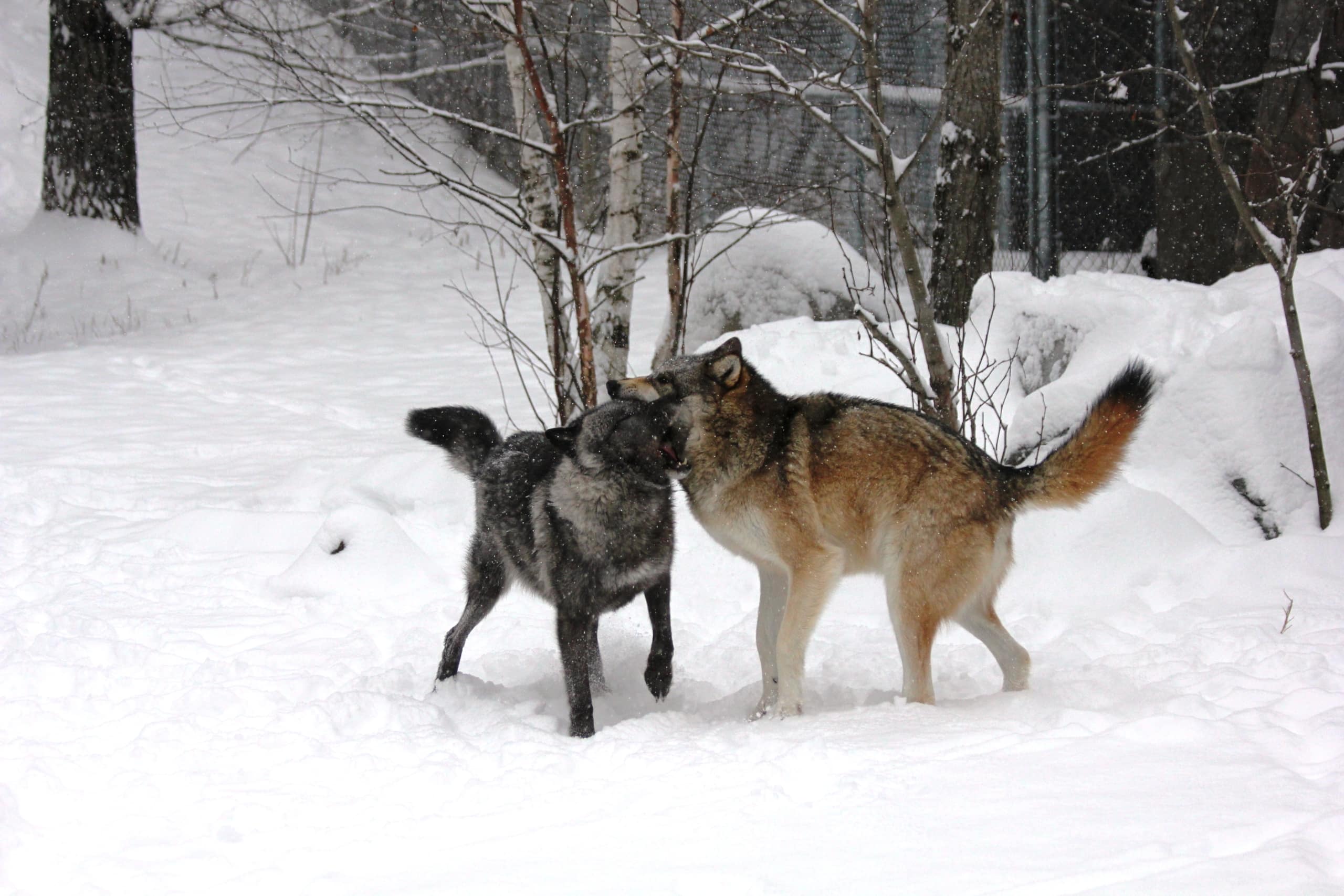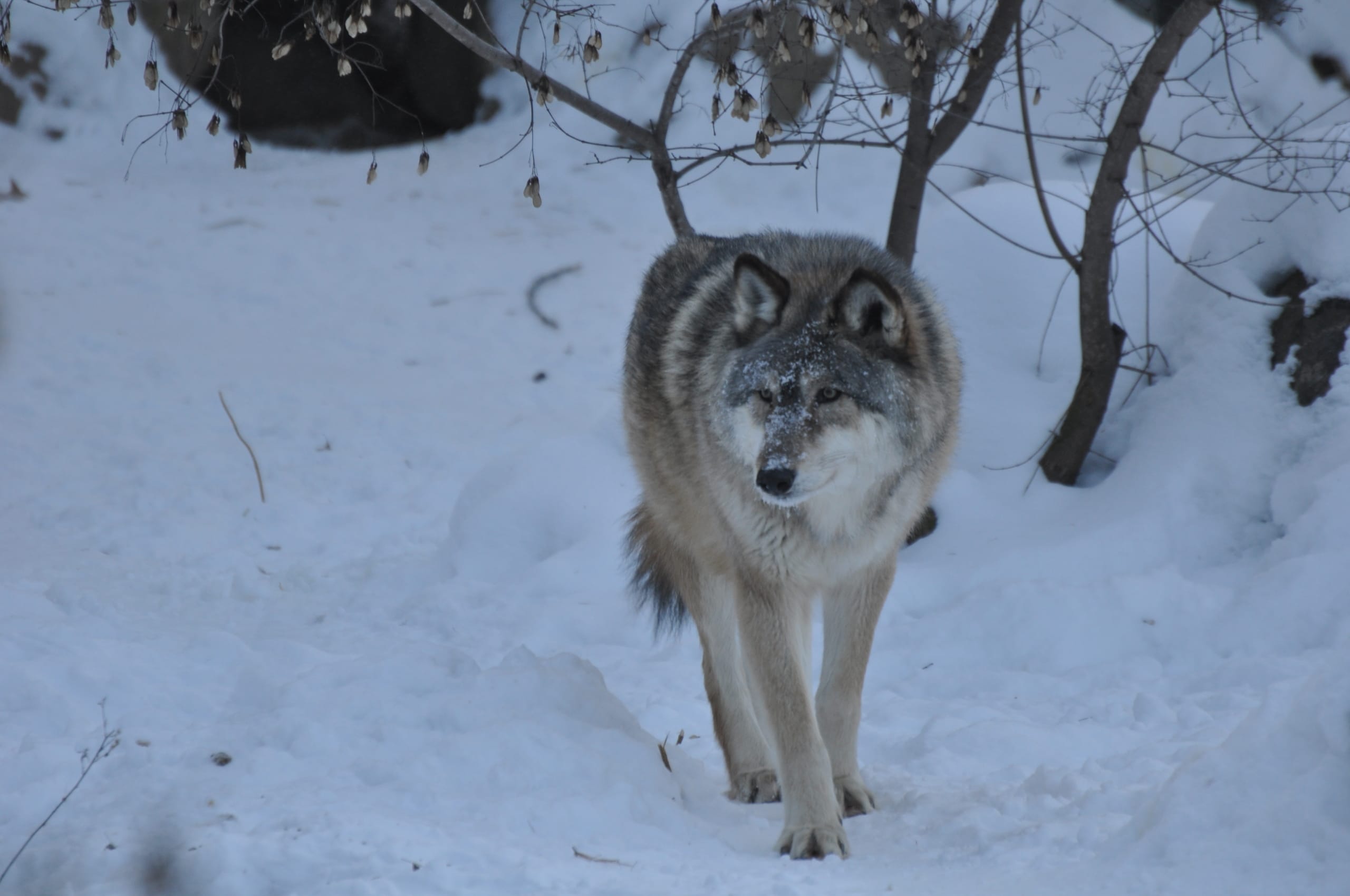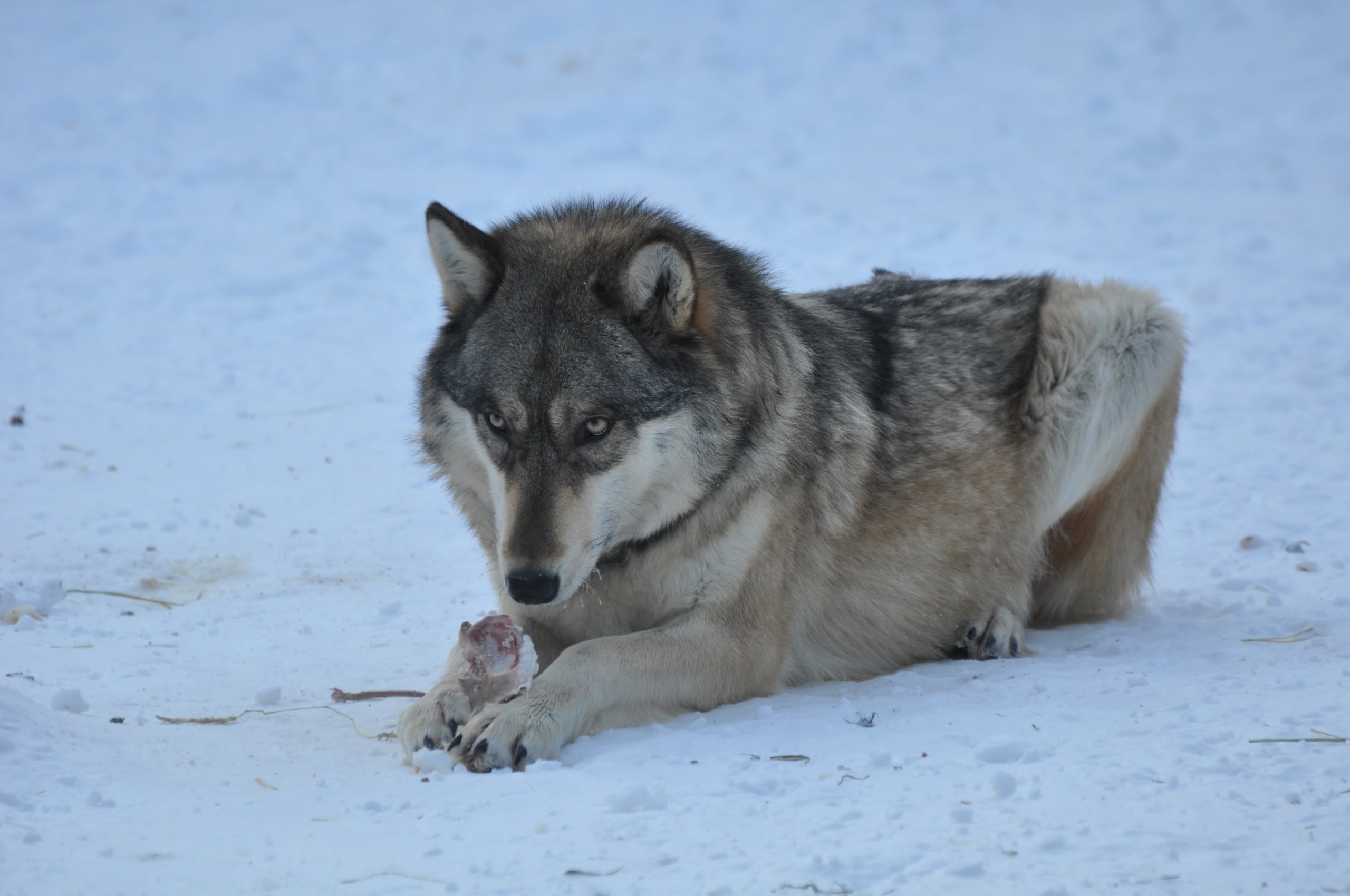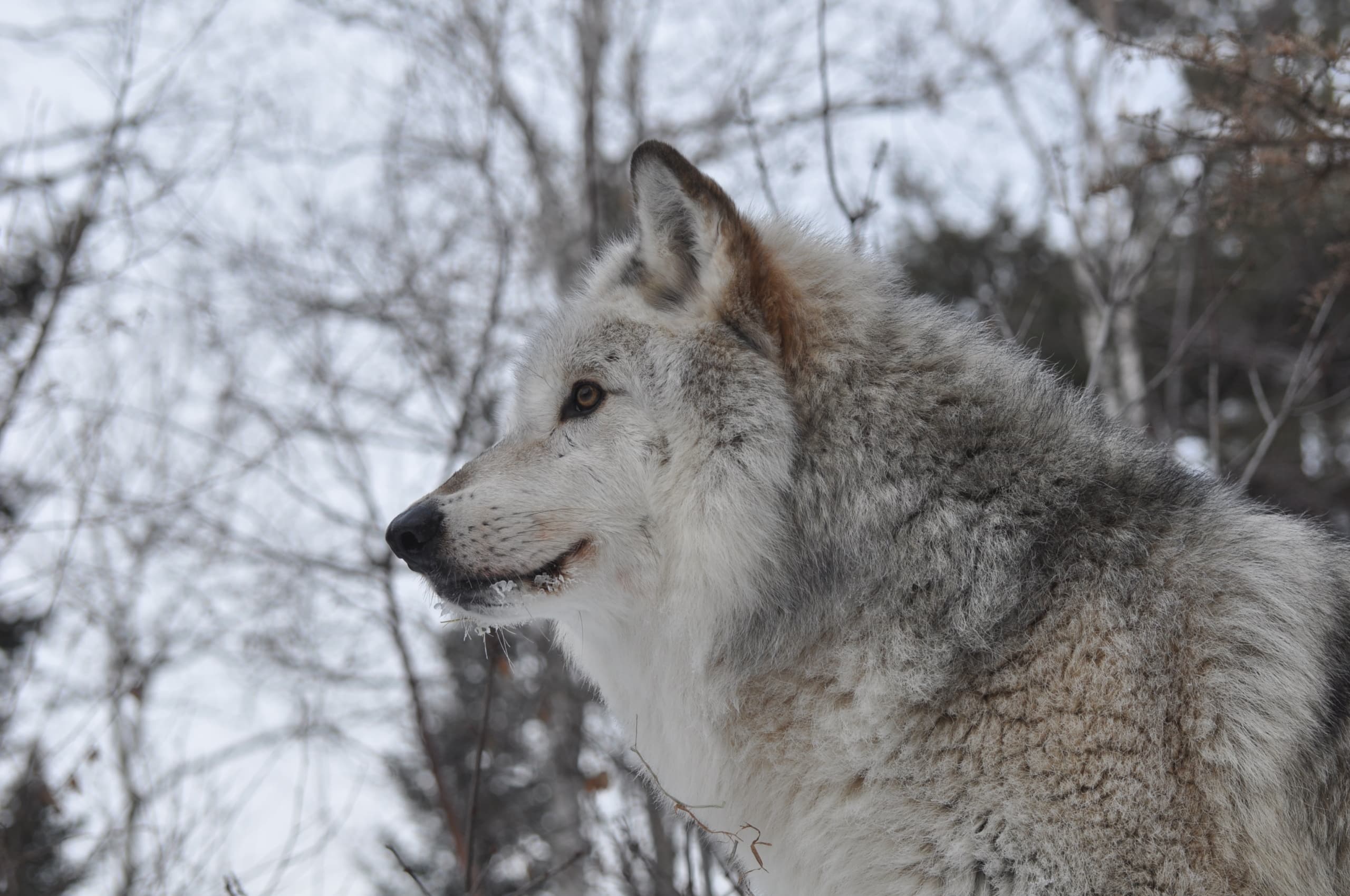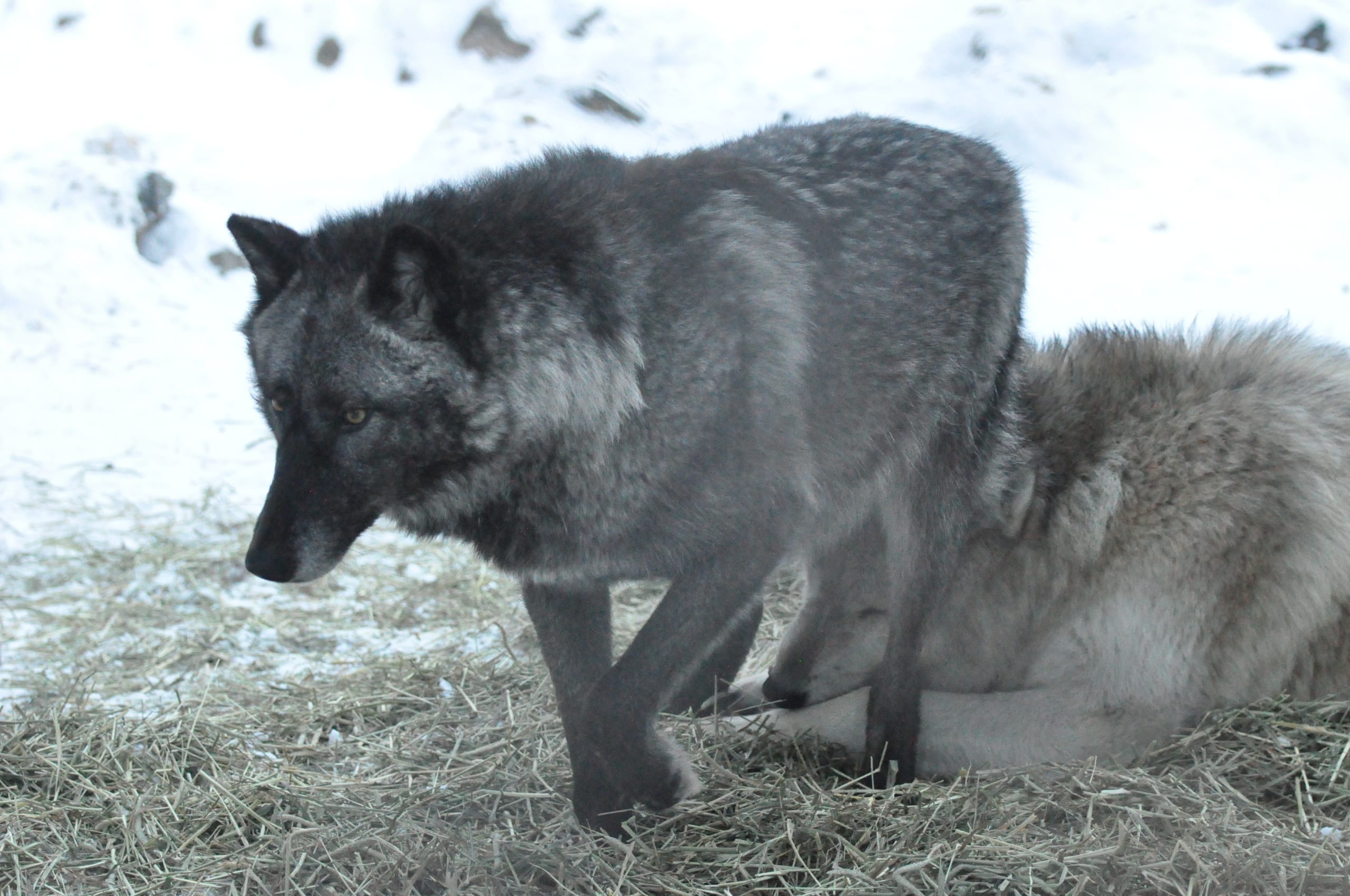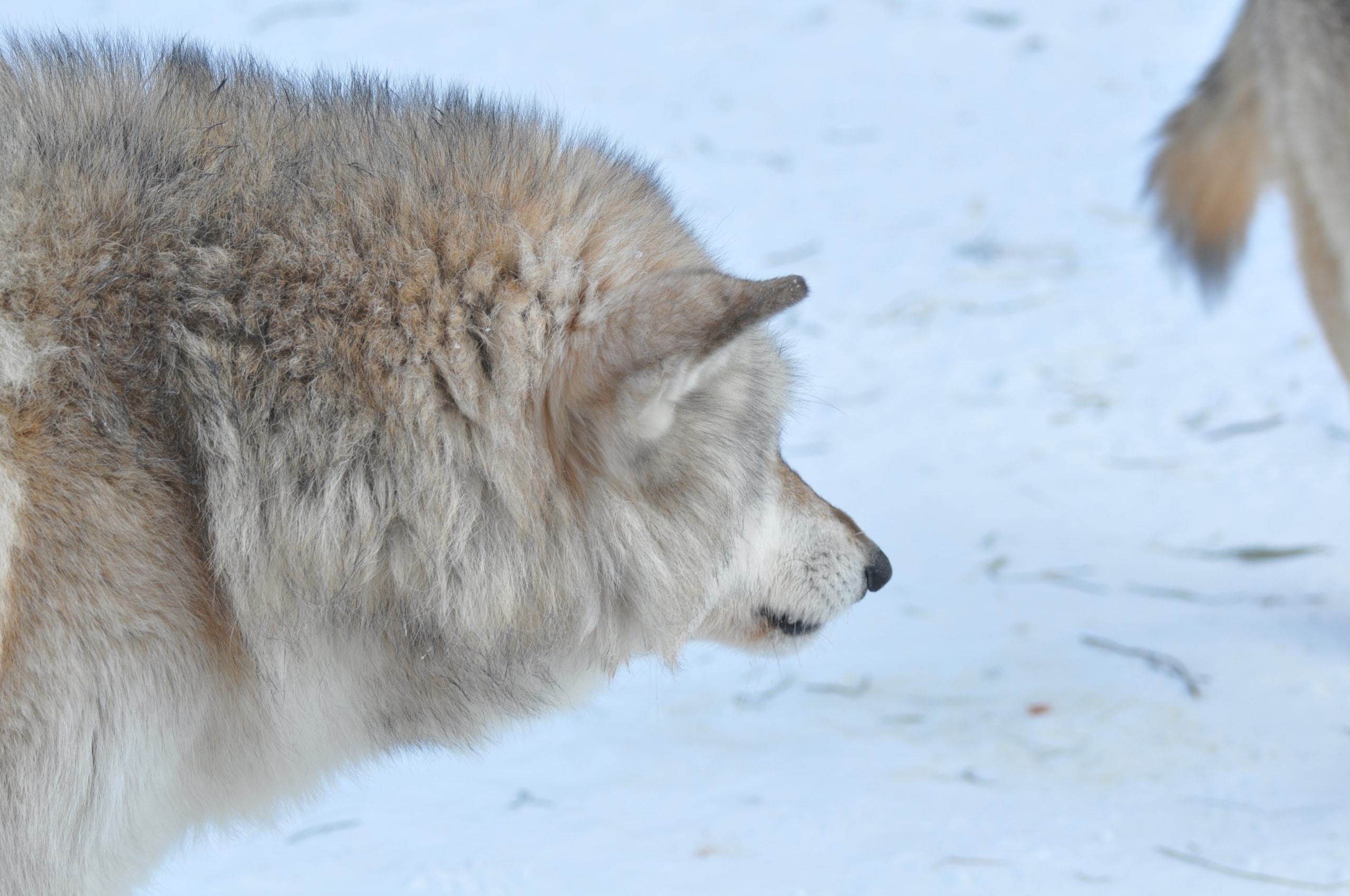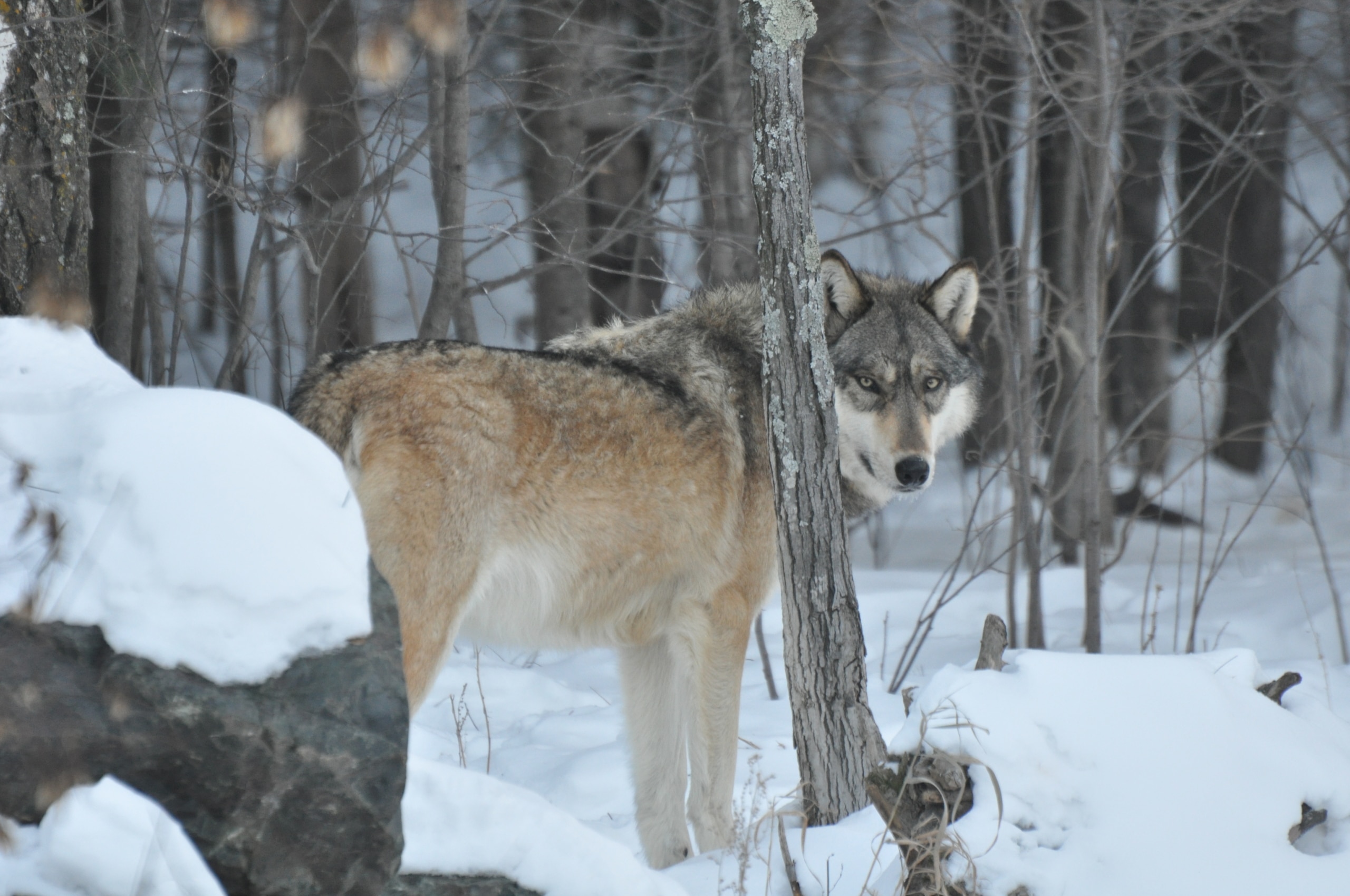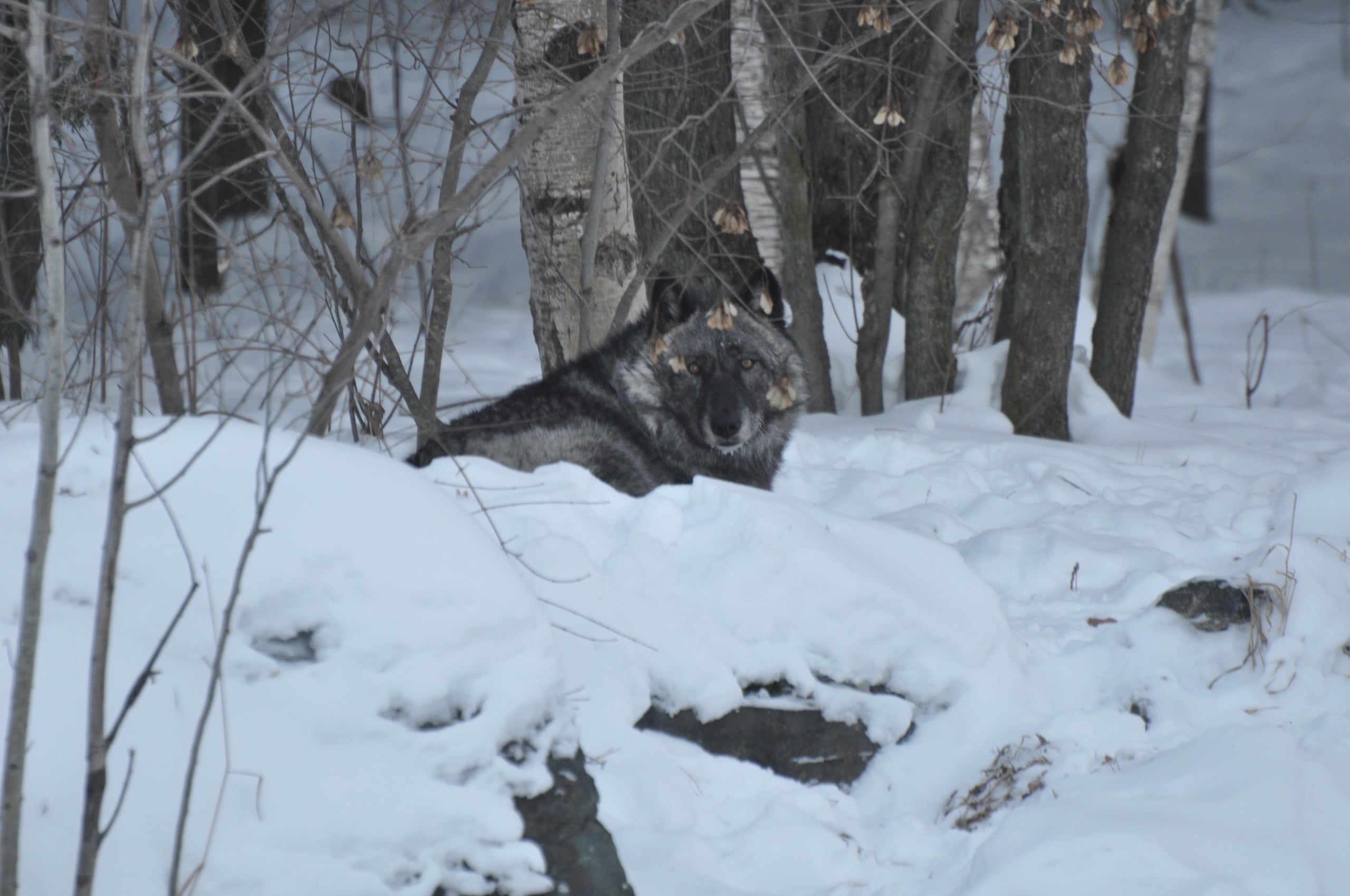Wolf Logs written by Wolf Watch participants Steve Houglum and Marcia Mummau.
Aidan is a stoic, quiet, but alert pack leader who doesn’t interfere with the pack dynamics unless he deems it necessary, which isn’t very often. Aidan, Boltz and Luna had a howling session early Saturday morning, awakening the wolf watch group before dawn. The howl seemed to originate with Grizzer as the first howl heard was off in the distance.
The Wolf Watch program is generally offered on the first Friday of each month, allowing participants to join wolf care staff as they observe the pack interactions and record any behavioral data that helps determine pack dynamics.

